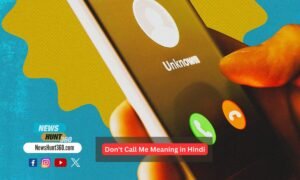For some people, learning Korean is relatively more challenging than, say, Spanish or French. After all, there is a need to study Hangul or the Korean alphabet. While it may seem complicated, it was developed by King Sejong the Great for more accessible learning. The characters are written in such a way that it follows how your mouth looks when you speak.
Once you master this, you’ll find that learning Korean is not so hard after all. Unlock the beauty of language learning with our comprehensive guide on the Korean alphabet with English translations. From mastering pronunciation to exploring the rich history of Hangul, our Korean alphabet chart and PDF resources empower you to learn Korean effortlessly.
Dive into the elegance of Korean script, consonants, vowels, and phonetic symbols. Elevate your linguistic journey with our A to Z guide and discover the fascinating writing system that shapes the Korean language.
Whether you’re trying to learn Korean for work or self-fulfillment, these five tips to learn the Korean alphabet are sure to help you out:
Contents
Korean Alphabet: Syllable Blocks and Writing Rules
Unlike the English language, the Korean language has words written in syllable blocks. The two or three (and sometimes, four) letters used are stacked together to form such a block. That said, every syllable block or word starts with a consonant letter. It is always followed by a vowel, which may be written below or to the right side.
Discover the beauty of the Korean Alphabet while you Learn a Second Language and Gain New Skills. Embrace the similarities and features embedded in mastering a new linguistic realm. Grateful for the enriching journey.

The letters are positioned in such a way that the third character is always located at the bottom. When writing, you can never have three Hangul letters in the top row. There are no uppercase or lowercase letters for the Hangul. Compared to the Japanese or Chinese characters, each Korean alphabet letter does not go beyond five strokes.
Korean Language: A Comprehensive Guide to Korean Alphabet Mastery
Unlock the beauty of the Korean language with our comprehensive Korean Alphabet Chart and PDF guide. Learn Korean writing effortlessly from A to Z with precise pronunciation and enrich your understanding of Korean calligraphy. Dive into the intricacies of the Korean syllabary and master pronunciation with our expertly crafted resources. Elevate your linguistic journey with a structured approach to Korean language learning.
Explore the artistry of Korean writing rules and pronunciation nuances. Start your immersive experience now! Dive into the enchanting world of the Korean alphabet with our comprehensive guide! From the mesmerizing Korean alphabet song to easy copy-and-paste features, explore the rich lore, pronunciation, and letter formation. Exploring the beauty of the Korean Alphabet while learning a second language is like unraveling the art of Ghostwriting and Literary Heritage. Both offer a journey into rich traditions, fostering cultural appreciation and linguistic growth.
Uncover the beauty of traditional writing and the evolution of the Korean script. Master the basics, from A to Z, with our engaging Korean alphabet chart. Immerse yourself in the art of Korean syllabic blocks and discover the nuances of the language. Elevate your learning experience with our keyboard-friendly approach and unlock the secrets of the Korean language effortlessly.
Study the Most Common Characters
The Hangul has 14 basic consonants and ten basic vowels. While it’s hard to learn all of them at once, you could start by memorizing the most common characters.

ㅂ – This comes with a B/P sound. It is almost unheard of, especially when spoken at the end of the word.
ㅁ – This box-type letter comes with an ‘M’ sound.
ㅇ – This is used when the syllable starts with a vowel sound. After all, the block should always start with a consonant for the first syllable. As this functions more as a placeholder, it does not produce any sound. However, when placed at the end of the syllable, it is pronounced as a light ‘NG.’
ㅓ– This character describes the beginning of the ‘O’ sound, much like saying ‘law’ or ‘awe.’ This is always written on the right side of the consonant letter.
ㅗ– This is another ‘O’ sound, but the pronunciation you make by saying ‘go’ or ‘bow.’ This letter, on the other hand, is always written underneath a consonant letter.
Consonants: Mind the Rules
The Hangul only has 14 consonants because of some unique rules.
For one, they don’t have sounds for the letters F, R, V, and Z, so they don’t have characters for these.
The letters Q, W, and X, on the other hand, are made by combining the sounds of two letters. For example, with the letter X, you merge the sounds of letters K and S.
Y, since it cannot be pronounced without a vowel sound, is written in vowels with double lines.
With a lot of consonants out of the picture, it’s time to work on some associations. Linking consonants with mnemonics is one of the best tips for learning the Korean alphabet.
For example:
ㅂ– ‘B’ sound in English – looks like a bed
ㄷ– ‘D’ sound in English – looks like a doorframe
ㄱ– ‘G’ sound in English – drawn like a gun!
ㅎ – ‘H’ sound in English – looks like a man with a hat
ㅈ– ‘J’ sound in English – appears like a water jug
ㄹ– ‘L’ sound in English – drawn like a ladder
ㅁ– ‘M’ sound in English – looks like a mailbox
ㄴ – ‘N’ sound in English – northeastern direction
ㅅ– ‘S’ sound in English – appears like a seashell clam
Vowels: It’s All About the Lines
Say you have more time to explore the not-so-common Hangul letters. One of the most important tips to learn the Korean alphabet is to mind the lines, especially when it comes to vowels.
To illustrate:
ㅣ = i
ㅏ = a
ㅓ = eo (sounds like ‘uh’)
ㅡ = eu
ㅜ = u
ㅗ = o
That said, the vowel’s line determines its placement in the syllable block. As such, the first three vowels above – ㅣ, ㅏ, and ㅓ – are written at the right of the consonant letter.
ㅡ, ㅜ, and ㅗ with their horizontal lines are written underneath the consonant Hangul.
Double Lines = Y Sound
If you see vowels written with double horizontal or vertical lines like ㅠ, ㅑ, ㅛ, ㅕ, ㅖ, ㅒ, it means it has a ‘Y’ sound before the vowel sound.
For example, the character ㅠ is like the word ‘you’ in English. The character ㅑ, on the other hand, is pronounced as ‘ya.’
See, it’s not that hard to learn the Hangul! By minding the tips mentioned above, you can master the language in no time.




